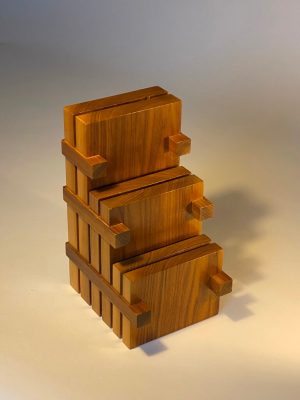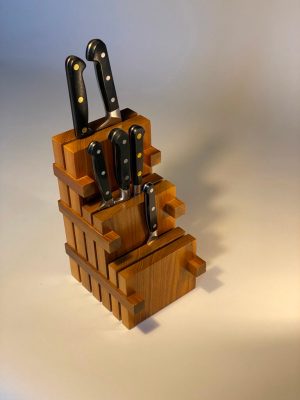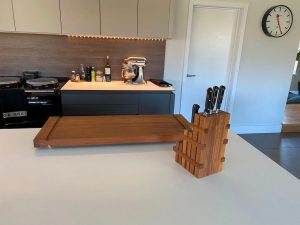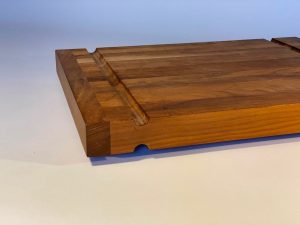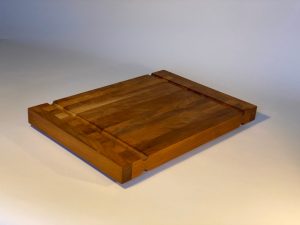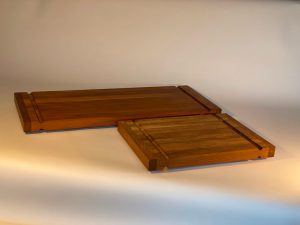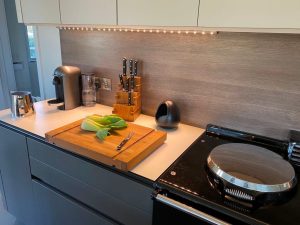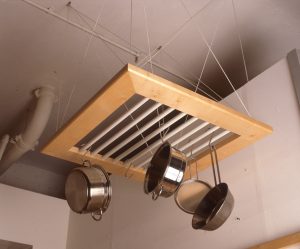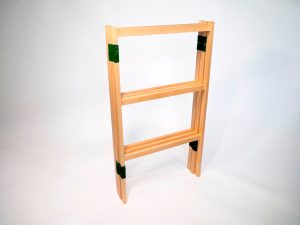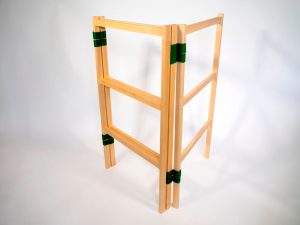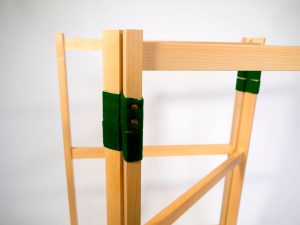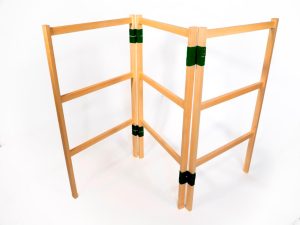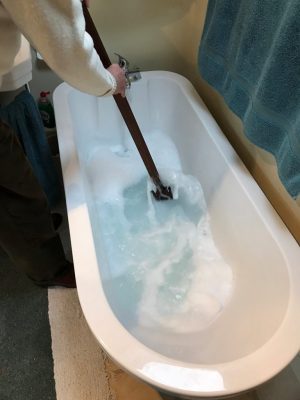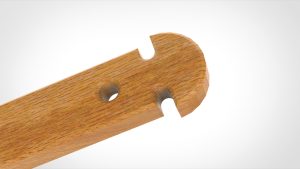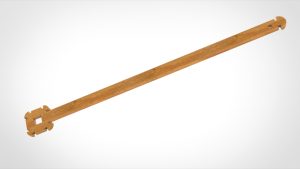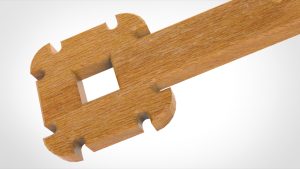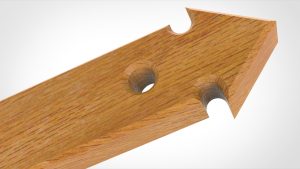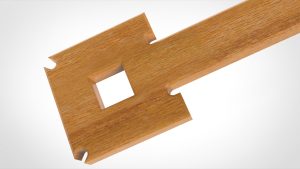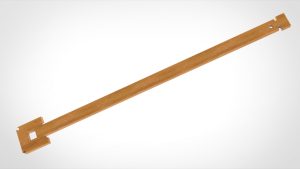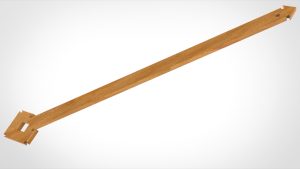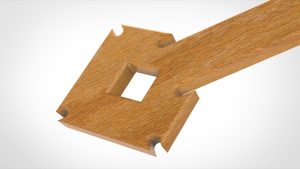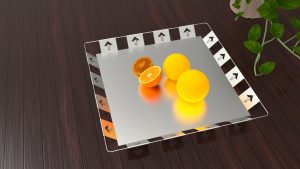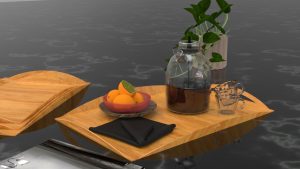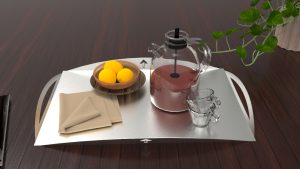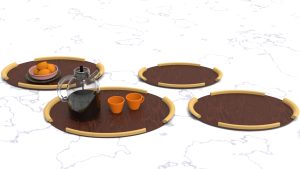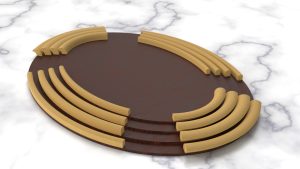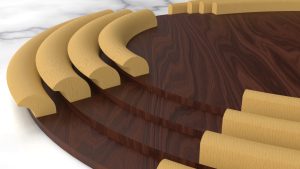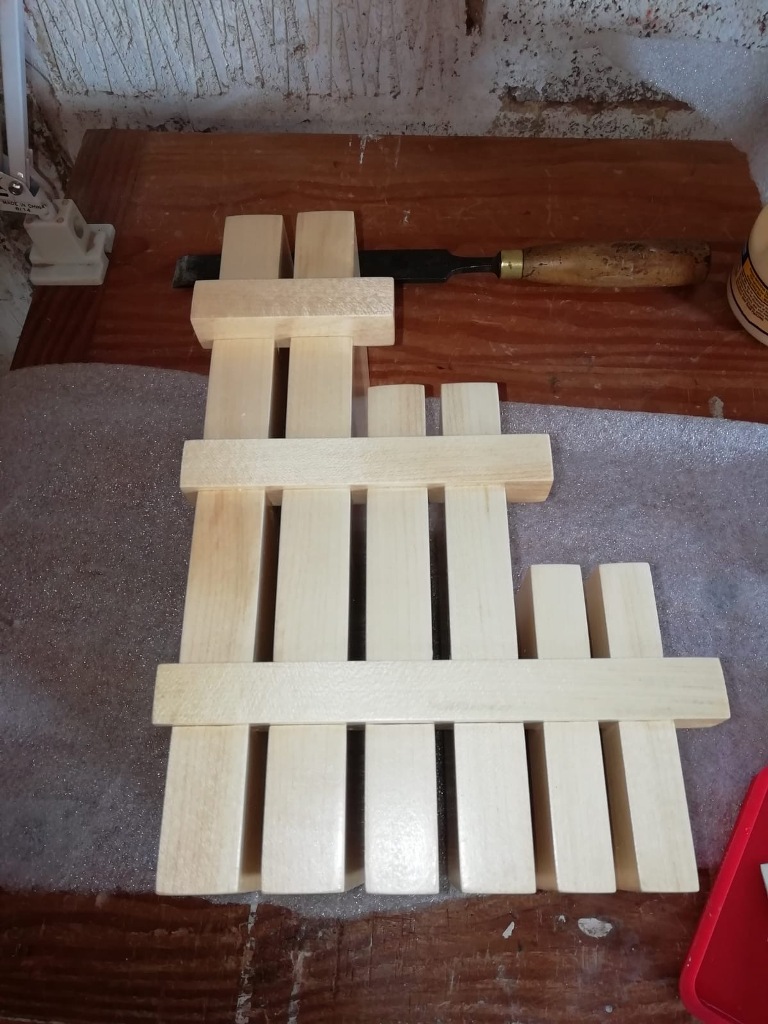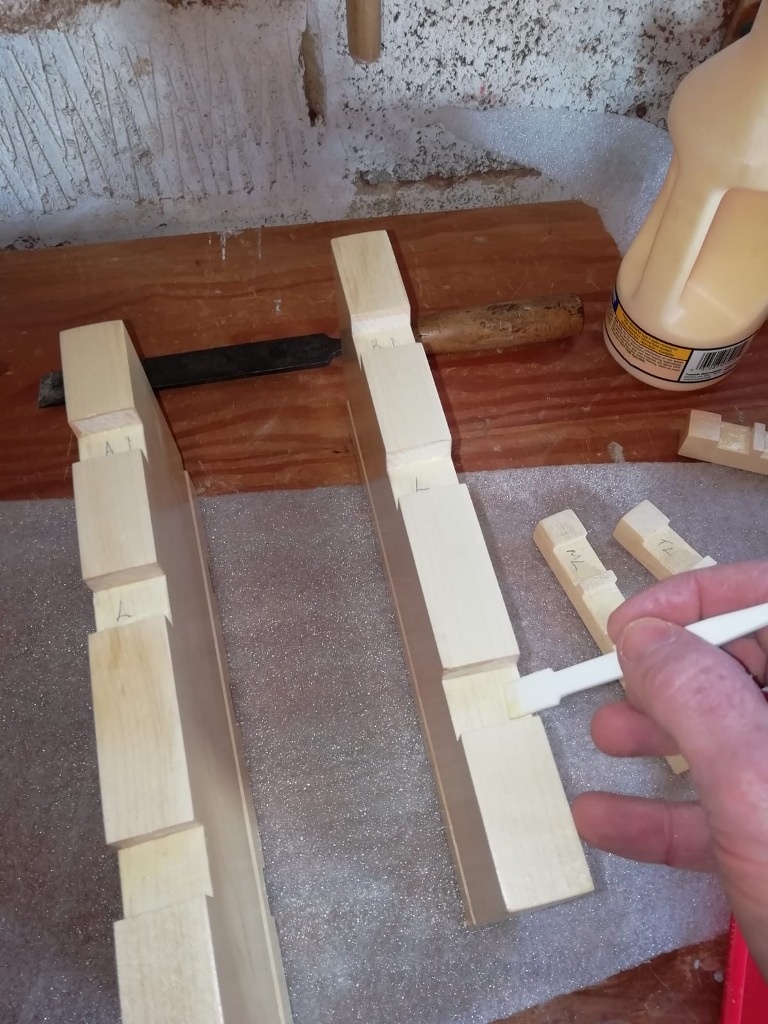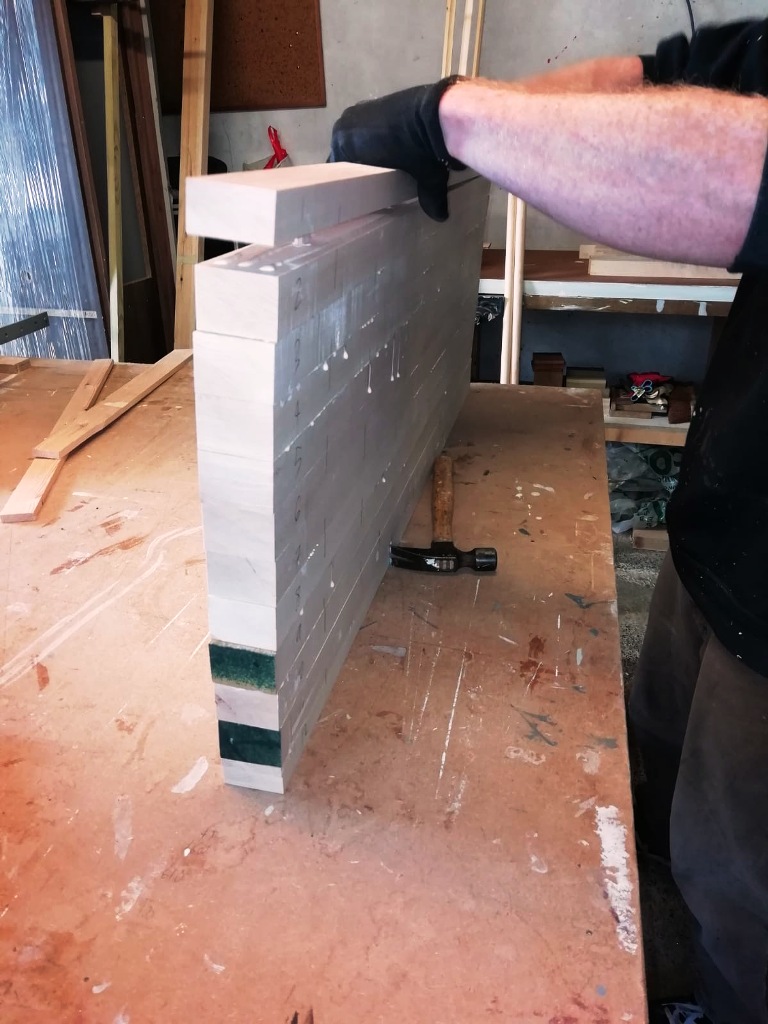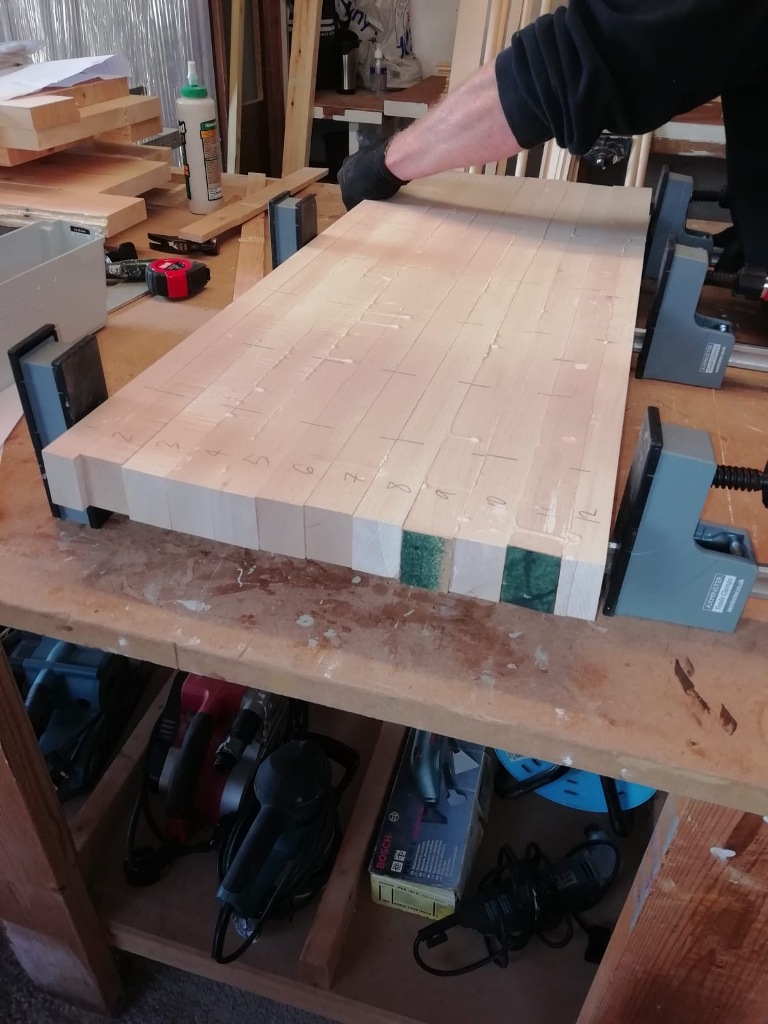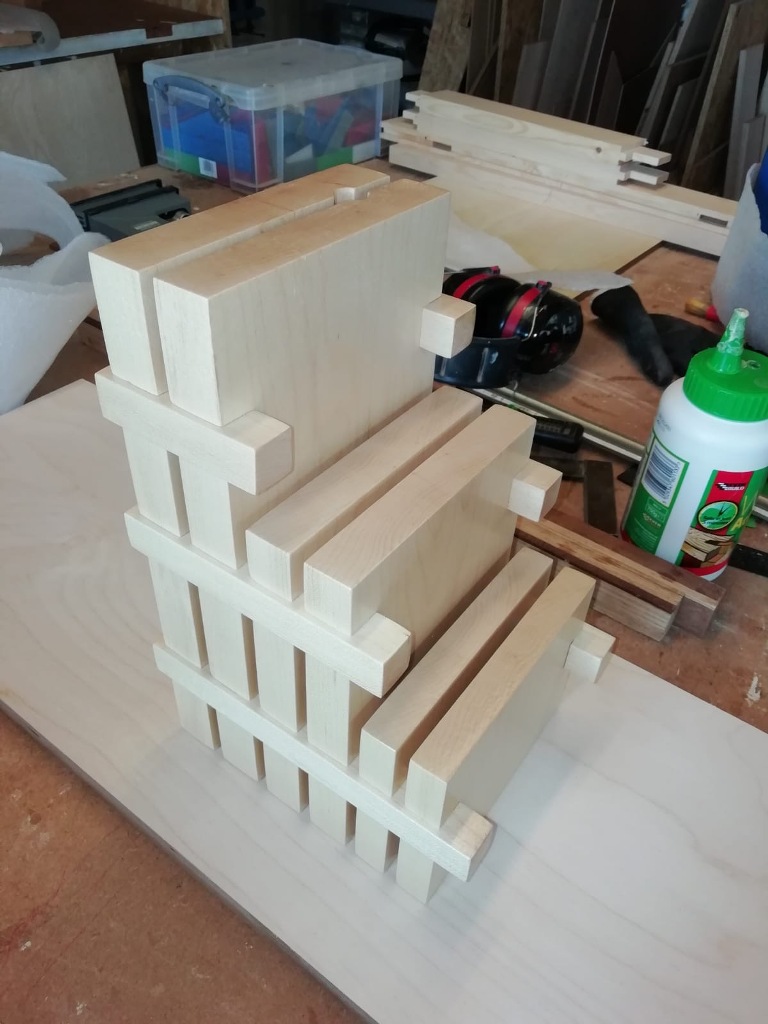1. Cutting Boards in Solid Black American Walnut or Maple (as seen here) by Mark Lewis, as Design Director to Lewis & Horning Ltd (1983-87)
Solid timber strips are bonded together forming a stable wooden cutting surface. Although not evident in this illustration, cork bars along the grooves between board and work surface allow ventilating air to circulate underneath the board.
This both helps prevent distortion to the oiled wood and grip the board in position with a slightly forgiving tone between a stone kitchen worktop and the force of a chopping action or cut of a cook’s knife.
2. Draining boards in solid maple by Mark Lewis, as Design Director to Lewis & Horning Ltd (1983-87)
The hardwoods are bonded together forming a stable wooden draining surface with grooves machined into the surface to allow the gals and crockery to drain guiding the suds into an adjacent sink over which the end hangs.
3. Knife Block and End Grain Chopping Block by Mark Lewis, as Design Director to Lewis & Horning Ltd (1983-87)
The knife block sits like and architectonic feature mimicking a postmodern building but facilitating a simple mechanism to store many knives and a sharpening steel.
Each slot is created by the proportionally formed panels, consecutive in thickness and in regard to height. The slots are able to receive numerous blades of both similar and of different length, allowing the blades handle to be easily grasped and removed, or shoved back again after use.
Having years of experience of cooking and designing kitchens for the most demanding of expert cooks, Mark Lewis is fully aware that most cooks and chefs have a large collection of favourite blades, each acquired over years of cooking and unlikely suitable to be retained in a conspicuous and concise regiment of a standard six or eight slot device.
The chopping block is made of solid end grain maple sections bonded together forming a stable wooden cutting surface.
4. Bath Paddle by Mark Lewis as Design Director to Lewis Design London (2017)
Currently unique to Mark Lewis, this ingenious device will become the bathroom accessory of the future and be as integral to any room with a bath as the bath mat or soap dish.
Seen here in the Postmodern Gothic version, the accessory is machined from Iroko, a sustainable hardwood possessed of the properties of teak: water impermeable, strong and dark – a product to last a lifetime and become an antiquity of the future.
When running a bath, even from a mixer tap, it’s almost impossible to finish with the depth of water required and it being at the preferred temperature. Adding cold or hot to one end or even the middle is inevitable and requires the added water to be evenly dispersed. Stirring it with ease is achieved by the appropriately long handled paddle, which also allows the paddle to be conveniently and smartly stood in an adjacent corner of the room.
5. Nesting Trays in Stained and Polished Plywood with Solid Maple Trims
A collection of nesting trays crafted from stained and polished plywood, accented with solid maple trims and finger grips, has evolved into three distinct sets of four trays: rectangular, oval, and hexagonal.
- Rectangular Trays: Designed to provide a neat, space-efficient storage solution, these trays can be easily stored upright, like books on a shelf.
- Oval Trays: With a larger format, the oval trays can be stacked to create multi-level platforms, similar to a baker’s rack used for cooling bread or pastries.
- Hexagonal Trays: The largest of the hexagonal trays doubles as a chessboard, while the next in size serves as a Chinese checkers board. Each has been precisely machined with the necessary indents to hold stone spheres or chess pieces.
Cork mats are available for each nesting set, fitting seamlessly inside the maple trims to provide grip and protect the polished surface. The meticulous machining and finishing of these trays result in a refined, high-quality product with an exceptionally durable lacquered finish.
6. Prestige Stacking Metal Trays in Polished Stainless Steel or Black Lacquered Mild Steel
The LDL collection of high-bread stacking trays is crafted using laser cutting and precision folding techniques, producing two versatile designs: the Butler’s Tray (Rectangular) and the Cocktail Tray (Square)
Available in polished stainless steel or black lacquered mild steel, these trays deliver a sleek, durable product suitable for the finest hotels, yachts, or home bars. Each tray can be paired with a cork mat to provide added grip and surface protection against the polished or lacquered finish.
Price List and Dimensions
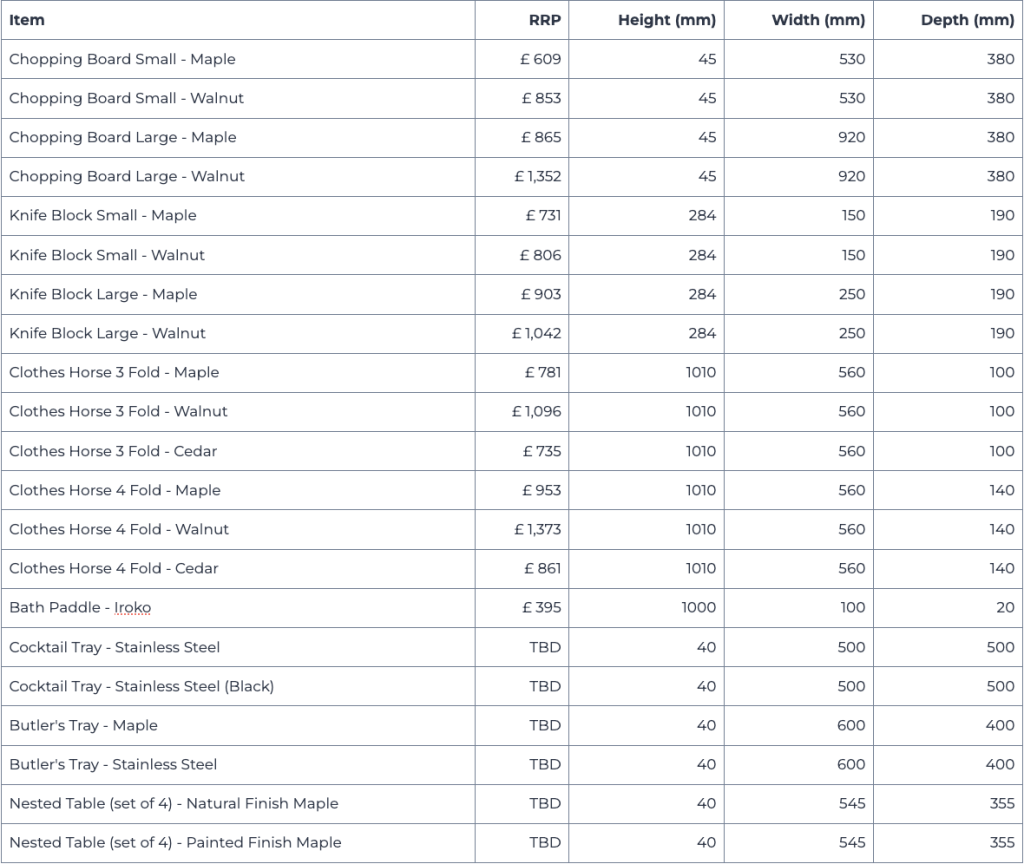
Pictures below documenting the processes involved in making both the chopping board and knife block:
